|
|
|
Oxford University Press
|
Greek and Roman warfare differed from other cultures and was unlike any other forms of warfare before and after. The key difference is often held to be that the Greeks and Romans practised a Western Way of War, where the aim is an open, decisive battle, won by courage instilled in part by discipline. Harry Sidebottom looks at how and why this Western Way of War was constructed and maintained by the Greeks and Romans, why this concept is so popular and prevalent today, and at whether or not this is an accurate interpretation. All aspects of ancient warfare are thoroughly examined — from philosophy and strategy to the technical skills needed to fight. He looks at war in the wider context — how wars could shape classical society, and how the individual's identity could be constructed by war, for example the Christian soldier fighting in God's name. He also explores the ways in which ancient society thought about conflict: Can a war be just? Why was siege warfare particularly bloody? What role did divine intervention play in the outcome of a battle? Taking fascinating examples from the Iliad, Tacitus, and the Persian Wars, Sidebottom uses arresting anecdotes and striking visual images to show that the any understanding of ancient war is an ongoing process of interpretation. |
|
How much have women's lives really changed? In the West women still come up against the 'glass ceiling' at work, most earning considerably less than their male counterparts. What are we to make of the now commonplace insistence that feminism deprives men of their rights and dignities? And how does one tackle the issue of female emancipation in different cultural and economic environments — in, for example, the Middle East, the Indian sub-continent, and Africa? This book provides an historical account of feminism, exploring its earliest roots as well as key issues including voting rights, the liberation of the sixties, and its relevance today. Margaret Walters touches on the difficulties and inequities that women still face more than forty years after the 'new wave' of 1960s feminism, such as how successful women are at combining domesticity, motherhood, and work outside the house. She brings the subject completely up to date by providing an analysis of the current situation of women across the globe, from Europe and the United States to Third World countries. |

|
Fossils have been vital to our understanding of the formation of the earth and the origins of all life on it. However, their impact has not been limited to debates about geology and evolution: attempts to explain their existence has shaken religion at its very roots, and they have remained a subject of ceaseless fascination for people of all ages and backgrounds. In this delightful book, Keith Thomson provides a remarkably all-encompassing explanation of fossils as a phenomenon. How did Darwin use fossils to support his theory of evolution? What are living fossils? What fossils will we leave behind for future generations to examine? Building on the scientific aspects, he places fossils in a very human context, highlighting their impact on philosophy and mythology, our concept of time, and today's popular culture. What quickly becomes obvious is that the discovery of fossils and the ways in which they have been interpreted over time makes for fascinating reading. From the black market to the Piltdown Man, and from mythological dragons to living dinosaurs, fossils hold a permanent place in the popular imagination. |
|
Foucault is one of those rare philosophers who has become a cult figure. Born in 1926 in France, over the course of his life he dabbled in drugs, politics, and the Paris SM scene, all whilst striving to understand the deep concepts of identity, knowledge, and power. From aesthetics to the penal system; from madness and civilisation to avant-garde literature, Foucault was happy to reject old models of thinking and replace them with versions that are still widely debated today. A major influence on Queer Theory and gender studies (he was openly gay and died of an AIDS-related illness in 1984), he also wrote on architecture, history, law, medicine, literature, politics and of course philosophy, and even managed a best-seller in France on a book dedicated to the history of systems of thought. Because of the complexity of his arguments, people trying to come to terms with his work have desperately sought introductory material that makes his theories clear and accessible for the beginner. Ideally suited for the Very Short Introductions series, Gary Gutting presents a comprehensive but non-systematic treatment of some highlights of Foucault's life and thought. Beginning with a brief biography to set the social and political stage, he then tackles Foucault's thoughts on literature, in particular the avant-garde scene; his philosophical and historical work; his treatment of knowledge and power in modern society; and his thoughts on sexuality. |

|
From subtle discrimination in everyday life and scandals in politics, to incidents like lynchings in the American South, cultural imperialism, and 'ethnic cleansing', racism exists in many different forms, in almost every facet of society. But what actually is race? How has racism come to be so firmly established? Why do so few people actually admit to being racist? How are race, ethnicity, and xenophobia related? Racism: A Very Short Introduction incorporates the latest research to demystify the subject of racism and explore its history, science, and culture. It sheds light not only on how racism has evolved since its earliest beginnings, but will also explore the numerous embodiments of racism, highlighting the paradox of its survival, despite the scientific discrediting of the notion of 'race' with the latest advances in genetics. |
|
The Sikh religion has a following of over 20 million people worldwide and is ranked as the world's 5th largest religion. However, events such as the verbal and physical attacks on Sikhs just after September 11 indicated that Sikhs were being mistaken for Muslims, and suggests that the raising of sufficient and appropriate awareness about Sikhism still needs to be addressed. This book will introduce newcomers to Sikhism's meanings and myths, and its practices, rituals, and festivals. The key threads in the fascinating history of the religion will be highlighted, from the Gurus and the development of the Sikh look, to martyrdom and militarization in the 17th and 18th Centuries and the diaspora. Eleanor Nesbitt brings the subject completely up to date with an examination of gender and caste, referring to films, such as Bend It Like Beckham, and media reportings of caste, infanticide, and foeticide. |
|
Contemporary art has never been so popular — but what is 'contemporary' about contemporary art? What is its role today, and who is controlling its future? Bloody toy soldiers, gilded shopping carts, and embroidered tents. Contemporary art is supposed to be a realm of freedom where artists shock, break taboos, flout generally received ideas, and switch between confronting viewers with works of great emotional profundity and jaw-dropping triviality. But away from shock tactics in the gallery, there are many unanswered questions. Who is really running the art world? What effect has America's growing political and cultural dominance had on art? Julian Stallabrass takes us inside the international art world to answer these and other controversial questions, and to argue that behind contemporary art's variety and apparent unpredictability lies a grim uniformity. Its mysteries are all too easily explained, its depths much shallower than they seem. Contemporary art seeks to bamboozle its viewers while being the willing slave of business and government. This book is your antidote and will change the way you see contemporary art. |
|
Crusading fervour gripped Europe for over 200 years, creating one of the most extraordinary, vivid episodes in world history. Whether the Crusades are regarded as the most romantic of Christian expeditions, or the last of the barbarian invasions, they have fascinated generations ever since, and their legacy of ideas and imagery has resonated through the centuries, inspiring Hollywood movies and great works of literature. Even today, to invoke the Crusades is to stir deep cultural myths, assumptions and prejudices. Yet despite their powerful hold on our imaginations, our knowledge of them remains obscured an distorted by time. Were the Crusaders motivated by spiritual rewards, or by greed? Were the Crusades an experiment in European colonialism, or a manifestation of religious love? How were they organized and founded? With customary flair and originality, Christopher Tyerman picks his way through the many debates to present a clear and lively discussion of the Crusades; bringing together issues of colonialism, cultural exchange, economic exploitation, and the relationship between past and present. |

|
Almost everyone reads the newspaper, browses the Internet, listens to the radio or watches TV. Journalism has an indelible effect on our worldview — from the fight against global terrorism to the American presidential elections, celebrity scandal to the latest environmental coups. Hargreaves uses his unique position within the media to examine how we get this information and the many practical, political and professional decisions that the journalist has to make, as part of the process of delivering that information to us. Is journalism the 'first draft of history' or a dumbing-down of our culture and a glorification of the trivial and intrusive? In this intriguing book Ian Hargreaves argues that the core principles of 'freedom of the press' and the necessity of exposing the truth are as vital today as they ever were. |
|
Everyone has heard of the Dead Sea Scrolls, but amidst the conspiracies, the politics, and the sensational claims, it can be dificult to separate the myths from the reality. Timothy Lim here presents the true facts and leading theories behind the cultural and historical background of the scrolls, and examines their significance for our understanding of the Old Testament and the origins of Christianity and Judaism. He also tells the fascinating story of the scrolls since their discovery, explains the science behind their deciphering and dating, and does not omit the cast of characters, scandals, and controversies that have hastened the scrolls' rise to the status of cultural icon. |
|
Why do we remember events from our childhood as if they happened yesterday, but not what we did last week? Why does our memory seem to work well sometimes and not others? What happens when it goes wrong? Can memory be improved or manipulated, by psychological techniques or even brain implants? How does memory grow and change as we age? And what of so-called 'recovered' memories? This book brings together the latest research in neuroscience and psychology, and weaves in case-studies, anecdotes, and even literature and philosophy, to address these and many other important questions about the science of memory — how it works, and why we can't live without it. |

|
HIV/AIDS is without doubt the worst epidemic to hit humankind since the Black Death. The first case was identified in 1981; by 2004 it was estimated that about 40 million people were living with the disease, and about 20 million had died. Despite rapid scientific advances there is still no cure and the drugs are expensive and toxic. Because of controversies and taboos surrounding safe drug usage and prostitution, the numbers of people infected continues to rise. However, it is in the developing world and especially parts of Africa that the real catastrophe is unfolding. In some of the worst affected countries life expectancy has plummeted to below 35 years, which has led to a serious decline in economic growth, a sharp rise in orphaning, and the imminent collapse of health care systems. The news is not all bleak though. There have been unprecedented breakthroughs in understanding diseases and developing drugs. Because the disease is so closely linked to sexual activity and drug use, the need to understand and change behaviour has caused us to reassess what it means to be human and how we should operate in the globalising world. This Very Short Introduction provides an introduction to the disease, tackling the science, the international and local politics, the fascinating demographics, and the devastating consequences of the disease, and explores how we have — and must — respond. |
|
Psychiatry is now a highly visible activity — care in the community, compulsion, suicide, drug and alcohol abuse mean that few people are not touched by it. Indeed one in four of us will consult a psychiatrist in our life time. This book explains what psychiatry is, and what it is not. It starts with the identification of the major mental illnesses and why they are no longer considered just variations of normality. It charts the rise of the Asylum and its demise with the developments of Care in the Community, and the flourishing of psychoanalysis and its later transformation into more accessible psychotherapies. More than any other branch of medicine psychiatry has been attacked and criticised. There is a long catalogue of abuses — from mundane neglect and bizarre treatments through to political abuse by totalitarian regimes. Modern psychiatry too brings with it new controversies such as the medicalization of normal life, the power of the drug companies and the use of psychiatry as an agent of social control.The book does not shy away from outlining these issues but provides the reader with a clear understanding of what psychiatry is capable of, and what it is not capable of, so that they can draw their own conclusions. |

|
Simon Critchley's Very Short Introduction shows that Continental philosophy encompasses a distinct set of philosophical traditions and practices, with a compelling range of problems all too often ignored by the analytic tradition. He discusses the ideas and approaches of philosophers such as Kant, Hegel, Nietzsche, Husserl, Heidegger, Sartre, Habermas, Foucault, and Derrida, and introduces key concepts such as existentialism, nihilism, and phenomenology by explaining their place in the Continental tradition. |
|
Every day we seem to make and act upon all kinds of free choices — some of them trivial, and some so consequential that they may change the course of our life, or even the course of history. But are these choices really free? Or are we compelled to act the way we do by factors beyond our control? Is the feeling that we could have made different decisions just an illusion? And if our choices are not free, why should we be held morally responsible for our actions? This Very Short Introduction, written by a leading authority on the subject, looks at a range of issues surrounding this fundamental philosophical question, exploring it from the ideas of the Greek and medieval philosophers through to the thoughts of present-day thinkers. It provides a interesting and incisive introduction to this perennially fascinating subject. |
|
Do animals have moral rights? If so, what does this mean? What sorts of mental lives do animals have, and how should we understand welfare? By presenting models for understanding animals' moral status and rights, and examining their mental lives and welfare, David DeGrazia explores the implications for how we should treat animals in connection with our diet, zoos, and research. Animal Rights distinguishes itself by combining intellectual rigour with accessibility, offering a distinct moral voice with a non-polemical tone. |

|
Chaos exists in systems all around us. Even the simplest system of cause and effect can be subject to chaos, denying us accurate predictions of its behaviour, and sometimes giving rise to astonishing structures of large-scale order. Our growing understanding of Chaos Theory is having fascinating applications in the real world — from technology to global warming, politics, human behaviour, and even gambling on the stock market. Leonard Smith shows that we all have an intuitive understanding of chaotic systems. He uses accessible maths and physics (replacing complex equations with simple examples like pendulums, railway lines, and tossing coins) to explain the theory, and points to numerous examples in philosophy and literature (Edgar Allen Poe, Chang-Tzu, Arthur Conan Doyle) that illuminate the problems. The beauty of fractal patterns and their relation to chaos, as well as the history of chaos, and its uses in the real world and implications for the philosophy of science are all discussed in this Very Short Introduction. |
|
The aim of this book is to explain, carefully but not technically, the differences between advanced, research-level mathematics, and the sort of mathematics we learn at school. The most fundamental differences are philosophical, and readers of this book will emerge with a clearer understanding of paradoxical-sounding concepts such as infinity, curved space, and imaginary numbers. The first few chapters are about general aspects of mathematical thought. These are followed by discussions of more specific topics, and the book closes with a chapter answering common sociological questions about the mathematical community (such as Is it true that mathematicians burn out at the age of 25?). |

|
This entertaining Very Short Introduction reflects the enduring popularity of archaeology — a subject which appeals as a pastime, career, and academic discipline, encompasses the whole globe, and surveys 2.5 million years. From deserts to jungles, from deep caves to mountain tops, from pebble tools to satellite photographs, from excavation to abstract theory, archaeology interacts with nearly every other discipline in its attempts to reconstruct the past. |

|
Hinduism is practised by eighty per cent of India's population, and by thirty million people outside India. In this Very Short Introduction, Kim Knott combines a succinct and authoritative overview of a major religion with an analysis of the challenges facing it in the twentieth century. She discusses key preoccupations of Hinduism such as the centrality of the Veda as religious texts, the role of brahmins, gurus, and storytellers in the transmission of divine truths, and the importance of epics such as the Ramayana. Issues such as the place of women and dalits (untouchables) in contemporary society are also addressed, making this book stimulating reading for Hindus and non-Hindus alike. |
|